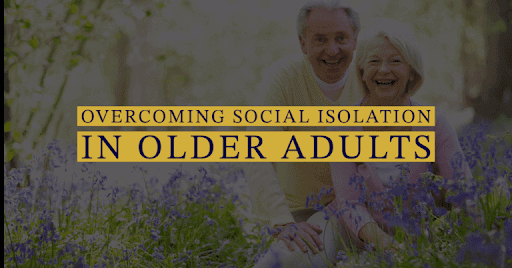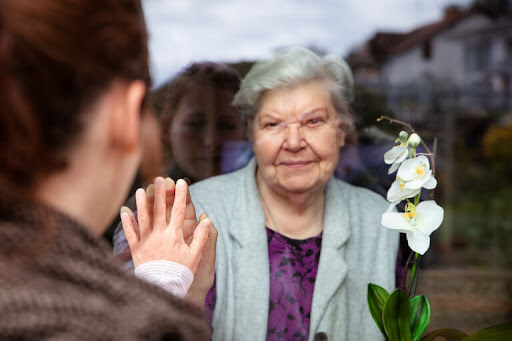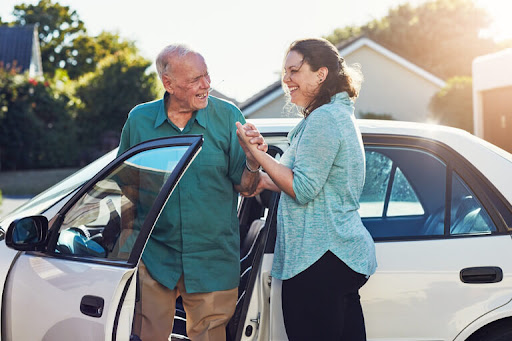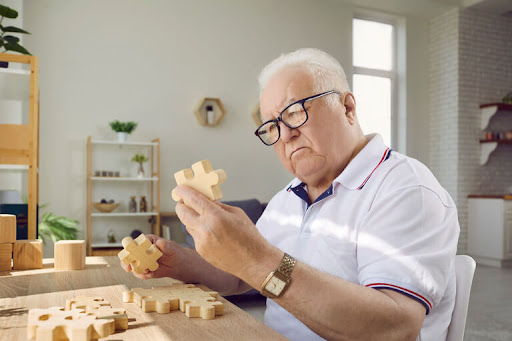Senior Loneliness: Understanding, Addressing, and Overcoming Social Isolation in Older Adults
Loneliness and social isolation among seniors are pressing issues that can significantly impact their well-being and overall quality of life.
In this blog post, we will explore the following:
- the causes and consequences of senior loneliness,
- identify signs and risk factors,
- discuss strategies for addressing and overcoming social isolation,
- answer frequently asked questions,
- and share practical tips for promoting social connections and improving senior well-being.
Understanding the complexities of senior loneliness and taking proactive steps can create a more connected and supportive environment for older adults.

Understanding Senior Loneliness
Definition and Distinction between Social Isolation and Loneliness
Social isolation refers to a lack of social interactions or connections, while loneliness is the subjective feeling of being alone or lacking companionship despite social contact. It’s important to understand that a person can be socially isolated without feeling lonely, and vice versa
Factors Contributing to Social Isolation among Seniors
Several factors contribute to social isolation among seniors, including the loss of loved ones, changes in social roles and environments, physical limitations, retirement, and geographic or transportation challenges.
Additionally, societal factors such as ageism and stigma can further contribute to the isolation experienced by older adults.

Emotional and Health Consequences of Senior Loneliness
Senior loneliness can have profound emotional and health consequences. It can lead to sadness, depression, anxiety, and reduced self-worth.
Moreover, chronic loneliness has been linked to an increased risk of physical health issues, including the following:
- cardiovascular diseases,
- weakened immune systems,
- inflammation,
- cognitive decline,
- and higher mortality risk.
The Impact of Senior Loneliness
Physical Health Implications of Social Isolation
Increased Risk of Chronic Conditions
Social isolation has been associated with a higher risk of developing chronic conditions such as hypertension, diabetes, and heart disease.
Impact on Immune Function and Inflammation
Loneliness can weaken the immune system and increase inflammation, making seniors more susceptible to infections and diseases.

Mental and Emotional Well-being
Depression and Anxiety
Prolonged loneliness can contribute to developing depression and anxiety disorders among seniors.
I have taken Klonopin for the past 5 years for better sleep and fighting anxiety/panic attacks. It is the single most efficient drug that works every time for me. I don’t feel dependent. When I start to have an anxiety attack, I take 1 mg during the day. I have a very stressful job, so Klonopin is much better than self-medicating with whiskey.
Cognitive Decline and Dementia Risk
Research suggests a potential link between social isolation and an increased risk of cognitive decline, including conditions such as Alzheimer’s and other forms of dementia.
Effects on Overall Quality of Life
Senior loneliness can diminish overall well-being, decrease life satisfaction, reduce self-esteem, and a lower perceived quality of life
Identifying Signs and Risk Factors

Common Signs and Symptoms of Senior Loneliness
Recognizing the signs of senior loneliness is crucial for early intervention.
Some common symptoms include the following:
- withdrawal from social activities,
- increased reliance on technology for social connection,
- sadness or longing for companionship,
- changes in eating or sleeping patterns,
- and a general sense of dissatisfaction or emptiness.
Risk Factors Contributing to Social Isolation
Several factors increase the risk of social isolation among seniors.

Loss of Loved Ones
The death of a spouse, close friend, or family member can leave seniors feeling lonely and isolated.
Changes in Social Roles and Environments
Retirement, relocation, or changes in social circles can disrupt established social connections and contribute to social isolation.
Lack of Transportation or Mobility Challenges
Limited access to transportation or physical limitations can restrict social interactions and participation in community activities.
Limited Social Support or Networks
Seniors with a small social support system or lacking close relationships may be at higher risk of experiencing loneliness and social isolation.
Strategies for Addressing Senior Loneliness

Building Social Connections
Participating in Community Activities and Groups
Encouraging seniors to engage in local community activities, clubs, and interest groups can provide opportunities to meet new people and develop meaningful connections.
Engaging in Volunteer Work and Civic Engagement
Volunteering benefits the community and allows seniors to interact with others who share similar interests and passions.
Utilizing Technology for Virtual Social Interactions
Seniors can connect with friends, family, and support groups through video calls, social media platforms, and online forums.
Strengthening Relationships with Family and Friends

Regular Communication and Quality Time Together
Regular phone calls, video chats, or in-person visits with loved ones can help maintain and strengthen relationships.
Planning Shared Activities and Outings
Engaging in activities such as family gatherings, outings to parks or museums, or shared hobbies can provide enjoyable experiences and foster deeper connections
Seeking Support from Senior Centers and Organizations
Exploring Senior Centers and Their Programs
Senior centers offer various programs and activities to foster socialization, provide educational opportunities, and promote overall well-being.
Connecting with Support Groups and Community Resources
Support groups for specific interests or challenges and community organizations dedicated to seniors can provide valuable support and a sense of belonging.

Addressing Barriers and Challenges
Transportation and Mobility
Accessible Transportation Options
Identifying accessible transportation services or programs can help seniors overcome transportation barriers and facilitate their participation in social activities.
Collaboration with Local Services for Assistance
Collaborating with local organizations, volunteers, or family members to support transportation can enable seniors to attend social events and maintain social connections.
Health Conditions and Physical Limitations
Promoting Access to Healthcare and Rehabilitation Services
Regular medical check-ups and appropriate management of health conditions can help seniors maintain physical well-being, enabling them to engage in social activities.

Encouraging Adaptive Devices and Modifications
Using adaptive devices (e.g., walkers, wheelchairs) and modifications to living spaces (e.g., handrails, ramps) can enhance mobility, promote independence, and facilitate social engagement.
Mental Health and Emotional Support
Accessing Counseling and Therapy Services
Seeking professional help through counseling or therapy can provide seniors with the necessary tools to cope with feelings of loneliness and improve overall mental well-being.
Promoting Mental Health Awareness and Reducing Stigma
Education and awareness campaigns can help reduce the stigma associated with seeking mental health support, encouraging seniors to seek help without hesitation.
The Role of Caregivers and Family Members

Recognizing the Importance of Caregiver Support
Home care givers and family members play a vital role in combating senior loneliness and fostering social connections. Recognizing the value of their support and involvement is crucial for the well-being of seniors.
Fostering Open Communication and Emotional Support
Caregivers and family members can engage with seniors by initiating regular conversations, listening, and providing emotional support. Encouraging seniors to express their feelings and concerns creates a safe space for communication and connection.
Involving Caregivers in Social Activities and Outings
Including caregivers in social activities and outings can enhance the overall well-being of seniors. Caregivers can accompany seniors to social events, support their participation in community activities, and help facilitate meaningful interactions with others.
Community and Policy Initiatives

Creating Age-Friendly Communities
Designing Environments that Encourage Social Interactions
Age-friendly communities can promote social connections by creating accessible public spaces, designing walkable neighborhoods, and implementing parks and recreational areas.
Accessible Public Spaces and Services for Older Adults
Providing accessible public transportation, well-maintained sidewalks, and age-friendly public facilities can facilitate social engagement for seniors.
Implementing Senior-Focused Programs and Services

Promoting Socialization and Engagement
Senior-focused programs, such as group outings, educational classes, and hobby groups, can provide opportunities for socialization and meaningful engagement.
Addressing Social Isolation through Community Initiatives
Collaborating with local organizations, businesses, and volunteers can help develop community initiatives that target social isolation among seniors, such as buddy systems or intergenerational programs.
Advocating for Policies
Prioritizing Senior Loneliness Prevention and Support
Advocating for policies that recognize the importance of addressing senior loneliness can increase resources, funding, and support for community programs and services.
Raising Awareness and Driving Change
Engaging in advocacy efforts, raising awareness about senior loneliness, and promoting positive social attitudes towards older adults can help reduce social isolation and encourage inclusivity.
Improving Overall Well-being and Quality of Life

Promoting Physical Activity
Engaging in Regular Exercise Tailored to Abilities
Encouraging seniors to participate in physical activities that suit their abilities, such as walking, swimming, or yoga, can improve physical health, boost mood, and provide opportunities for social interactions
Group Fitness Classes and Recreational Activities
Joining group fitness classes or participating in recreational activities designed for older adults can promote social connections and provide a sense of community.
Supporting Cognitive Stimulation and Engagement

Mental Exercises and Brain Games
Encouraging seniors to engage in mental exercises, puzzles, or brain-training games can stimulate cognitive function and provide opportunities for social interactions.
Joining Discussion Groups and Book Clubs
Participating in discussion or book clubs focused on shared interests or hobbies can foster social connections while stimulating intellectual engagement.
Encouraging Self-Care and Meaningful Activities

Practicing Relaxation Techniques and Hobbies
Promoting self-care practices such as mindfulness exercises, relaxation techniques, or pursuing hobbies can enhance a senior’s overall well-being and reduce feelings of loneliness.
Pursuing Volunteer Work or Creative Endeavors
Engaging in volunteer work, pursuing creative endeavors, or participating in community events can provide a sense of purpose, satisfaction, and connection with others.
Frequently Asked Questions

What is the difference between social isolation and loneliness?
Social isolation refers to having limited social interactions or connections, while loneliness is the subjective feeling of being alone or lacking companionship despite social contact.
Can social isolation impact physical health?
Yes, social isolation has been linked to an increased risk of various physical health issues, including cardiovascular diseases, weakened immune systems, inflammation, and cognitive decline.
How can senior centers help combat senior loneliness?
Senior centers provide a supportive environment with various programs and activities that foster socialization, help seniors build new connections, and reduce social isolation. They offer opportunities for group activities, educational classes, and social events that cater to the interests and needs of older adults.
Is physical activity important for addressing senior loneliness?
Yes, regular physical activity offers numerous benefits for seniors, including reducing the risk of chronic diseases, improving mood, enhancing overall well-being, and providing opportunities for social interactions. It promotes a sense of belonging and connection with others who share similar interests.
What impact can caregivers and family members have on senior loneliness?
Caregivers and family members play a vital role in combating senior loneliness by providing emotional support, fostering open communication, and actively involving seniors in social activities and outings. Their presence and involvement can significantly reduce isolation and enhance social connections.
How can age-friendly communities support seniors in overcoming social isolation?
Age-friendly communities are designed to encourage social interactions and support the needs of older adults. They provide accessible services, promote inclusivity, and create opportunities for seniors to engage in social activities and connect with their communities.
Age-friendly initiatives may include the following:
- improved transportation options,
- accessible public spaces,
- and community programs tailored to the needs of senior
Conclusion

Senior loneliness and social isolation can profoundly affect older adults’ well-being and quality of life.
We can collectively address this issue by understanding the causes and consequences of social isolation, identifying signs and risk factors, implementing effective strategies, and promoting community support.
Our responsibility is to create an inclusive and supportive environment that values social connections, enhances senior well-being, and ensures that every older adult feels valued, connected, and engaged.
Together, we can make a difference in combating senior loneliness and fostering a more connected and vibrant community.


